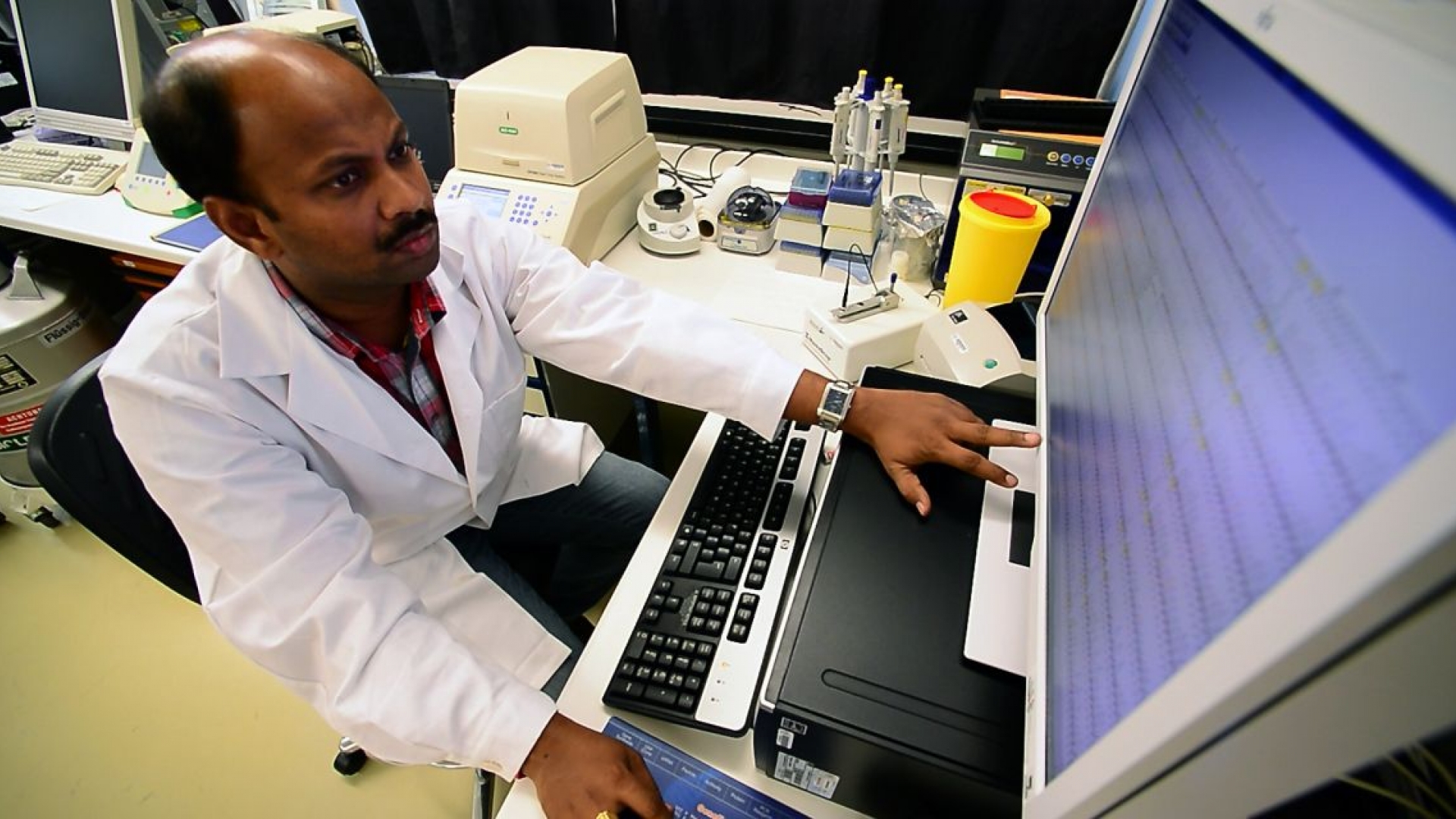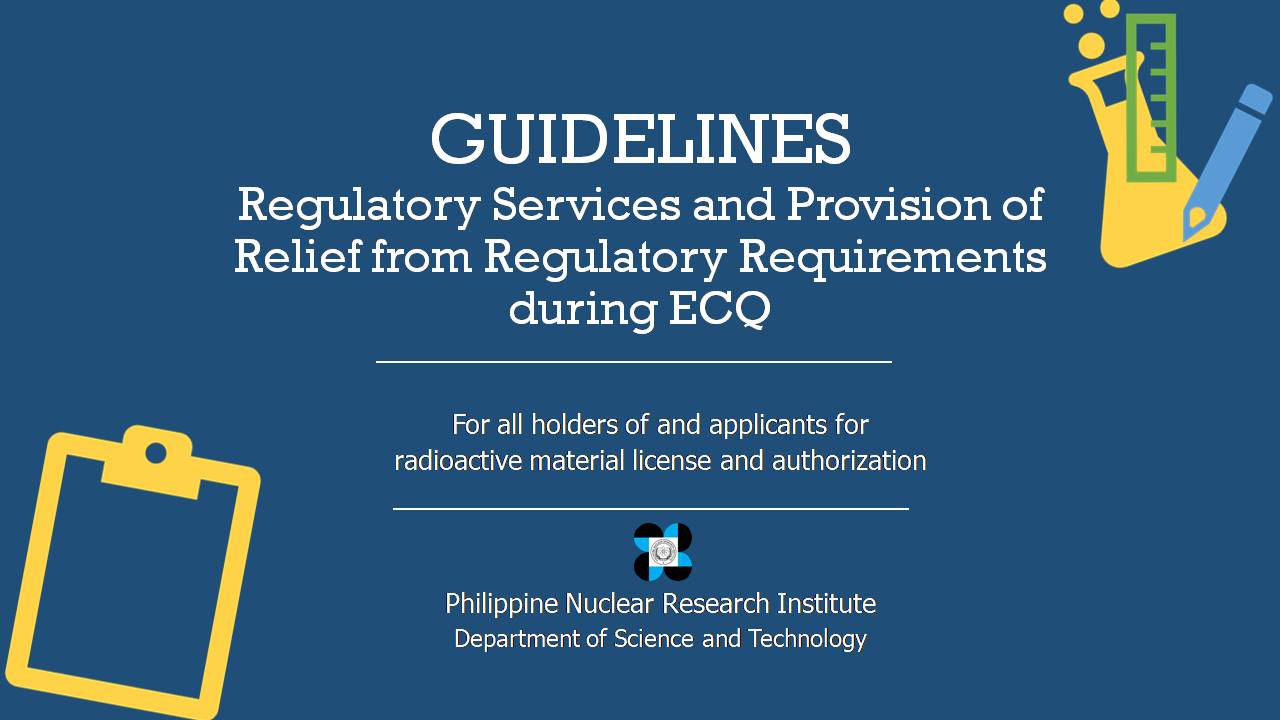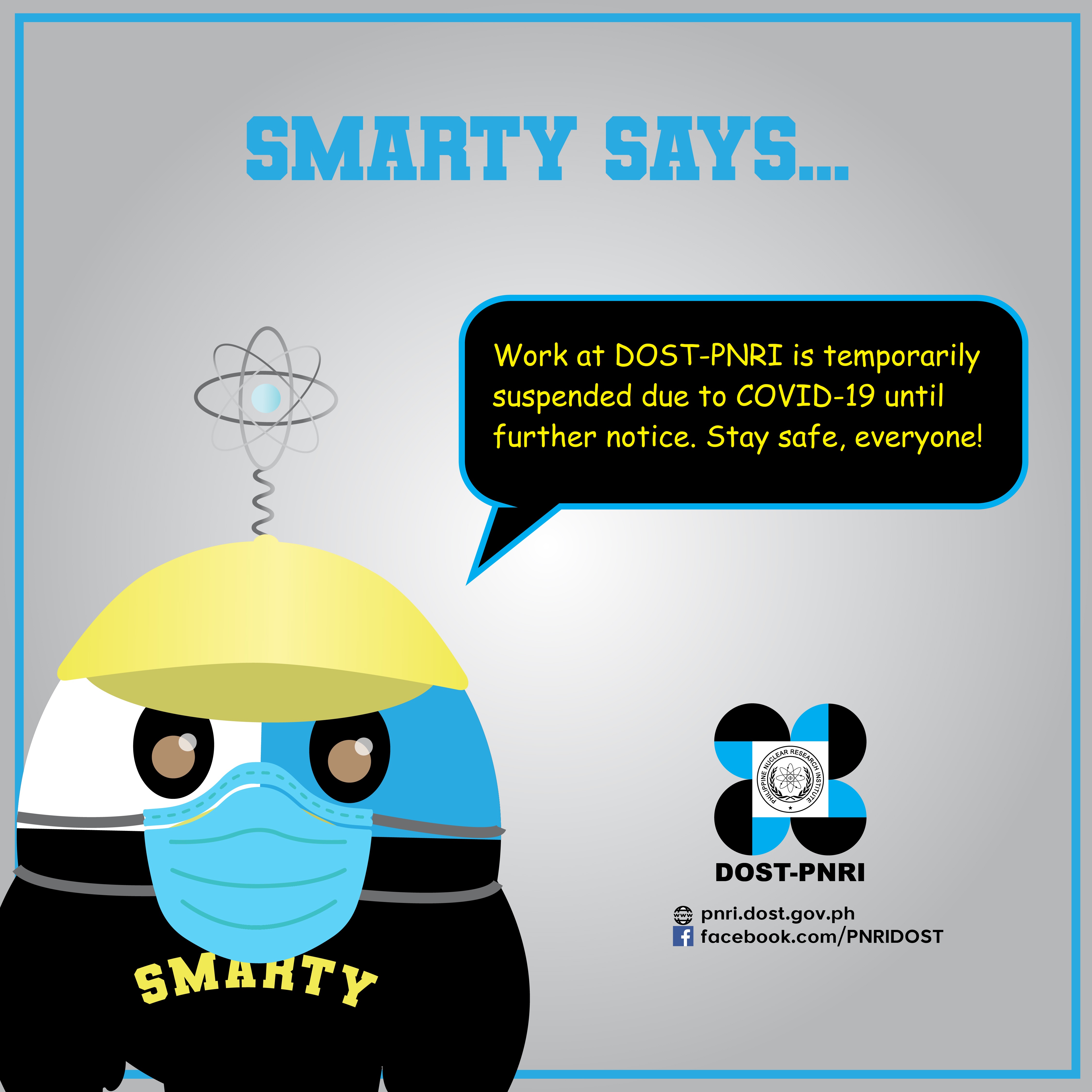DOST-PNRI issues guidelines for nuclear licensees, applicants during ECQ
- Details
DOST-PNRI issues guidelines for nuclear licensees, applicants during ECQ
The Department of Science and Technology - Philippine Nuclear Research Institute (DOST-PNRI) recently issued new guidelines for its licensees and license applicants for nuclear/radioactive materials and facilities. The guidelines, which also include relief from regulatory requirements, were crafted for the temporary change brought about by the Enhanced Community Quarantine in Metro Manila to the Institute’s regulatory services.
PNRI Information Notice 2020-02, S. 2020 covers adjustments to several regulatory processes due to the limited movement and physical access as part of preventing the spread of the COVID-19 virus. Adjustments in processes include applications for new license, license renewal or amendment; and certificates of exemption, non-radioactive material, and release and permit to transport. Also included are new guidelines in the request for relief from regulatory requirements.
Notable among the guidelines is the shift to online processing of applications. Also detailed in the guidelines are the schedules for receiving applications; required documents; procedures for claiming licenses, certificates and permits; and resumption of other processes once the ECQ has been lifted and government office work resumes.
In consideration of the constraints caused by the ECQ, PNRI will also allow licensees and authorization holders to be relieved from certain regulatory requirements upon request.
As mandated by Republic Acts 2067 and 5207, as well as Executive Order 128, PNRI serves as the national regulatory body for nuclear and radioactive materials and facilities.
The PNRI Information Notice 2020-02, S. 2020 is accessible here.
Announcement for RPSS Customers
- Details
To all customers of the Radiation Protection Services Section, please be informed of the following guidelines for OSL and TLD Personnel Monitoring Services as well as for other radiation protection services; please click the link below:
Announcement for RPSS Customers
For any concerns or queries, you may send your e-mail at This email address is being protected from spambots. You need JavaScript enabled to view it.. You may also contact the RPSS through the following phone numbers: 09336079294; 09270660751 or at 89296011 to 19 local 246/262 (Wednesdays only)
Stay safe, everyone!
Follow us on Facebook: https://www.facebook.com/RadiationProtectionServicesSection/
Researchers Analyze Chromosomes for Radiation Safety and Nuclear Emergencies
- Details


Using a microscope, PNRI researchers analyze blood samples for the presence of dicentric chromosomes which are telltale signs of radiation exposure
Researchers Analyze Chromosomes for Radiation Safety and Nuclear Emergencies
To ensure the safety of workers occupationally exposed to radiation in various sectors, PNRI researchers continue to study blood samples for any signs of radiation exposure beyond the allowable regulatory limits.
Cytogenetic biodosimetry involves the analysis of chromosomes in white blood cells to see if there are any aberrations that would serve as signs of radiation damage.
Most chromosomes look like the letter “X”, consisting of two arms connected by one centromere, but dicentric chromosomes instead have two centromeres which means that they are affected by ionizing radiation.
Many medical and industrial professionals wear dosimeters to monitor their exposure, but analyzing chromosomes provide a more direct assessment of the effects of radiation in a person’s body.
Cytogenetics can also be used in emergency preparedness and response. Researchers can assess the absorbed radiation doses of people who are involved in nuclear or radiological incidents.
IAEA donates COVID-19 detection kits to PH
- Details

RT-PCR detection kits provide more accurate COVID-19 test results. (Photo by IAEA)
IAEA donates COVID-19 detection kits to PH
As part of its program to help its member-states address COVID-19, the International Atomic Energy Agency donated detection kits that use nuclear techniques for quick, accurate detection of the dreaded virus. The Philippines is one of the member-states of the agency.
Called the Real-Time Reverse Transcription Polymerase Chain Reaction (RT-PCR), the technology is an important tool in detecting COVID-19 quickly, enabling doctors to immediately come up with diagnosis and provide proper medical care, increasing the survival chance of patients.
The diagnostic kits include microcentrifuge for sample extraction, shaker vortex, thermocycler, scanner for cryotubes, fastvirus master mix, and personal protective equipment. The €84,000- (or PhP4,776,595) worth donation is expected to be delivered next week to the Department of Health (DOH) which will field it to the Research Institute for Tropical Medicine and hospitals that conduct COVID-19 testing.
The IAEA will likewise conduct a training on the use of nuclear-derived techniques for the detection of COVID-19 when current restrictions are eased. It will be participated in by two professors from the University of the Philippines Manila.
The detection kits were formally requested by the Department of Foreign Affairs for DOH, and facilitated by the Permanent Mission of the Republic of the Philippines to the IAEA with the support of the DOST-PNRI, the country’s authority on nuclear matters. This IAEA donation is part of the technical cooperation project titled "Strengthening Capabilities of Member States in Building, Strengthening and Restoring Capacities and Services in Case of Outbreaks, Emergencies and Disasters."














































